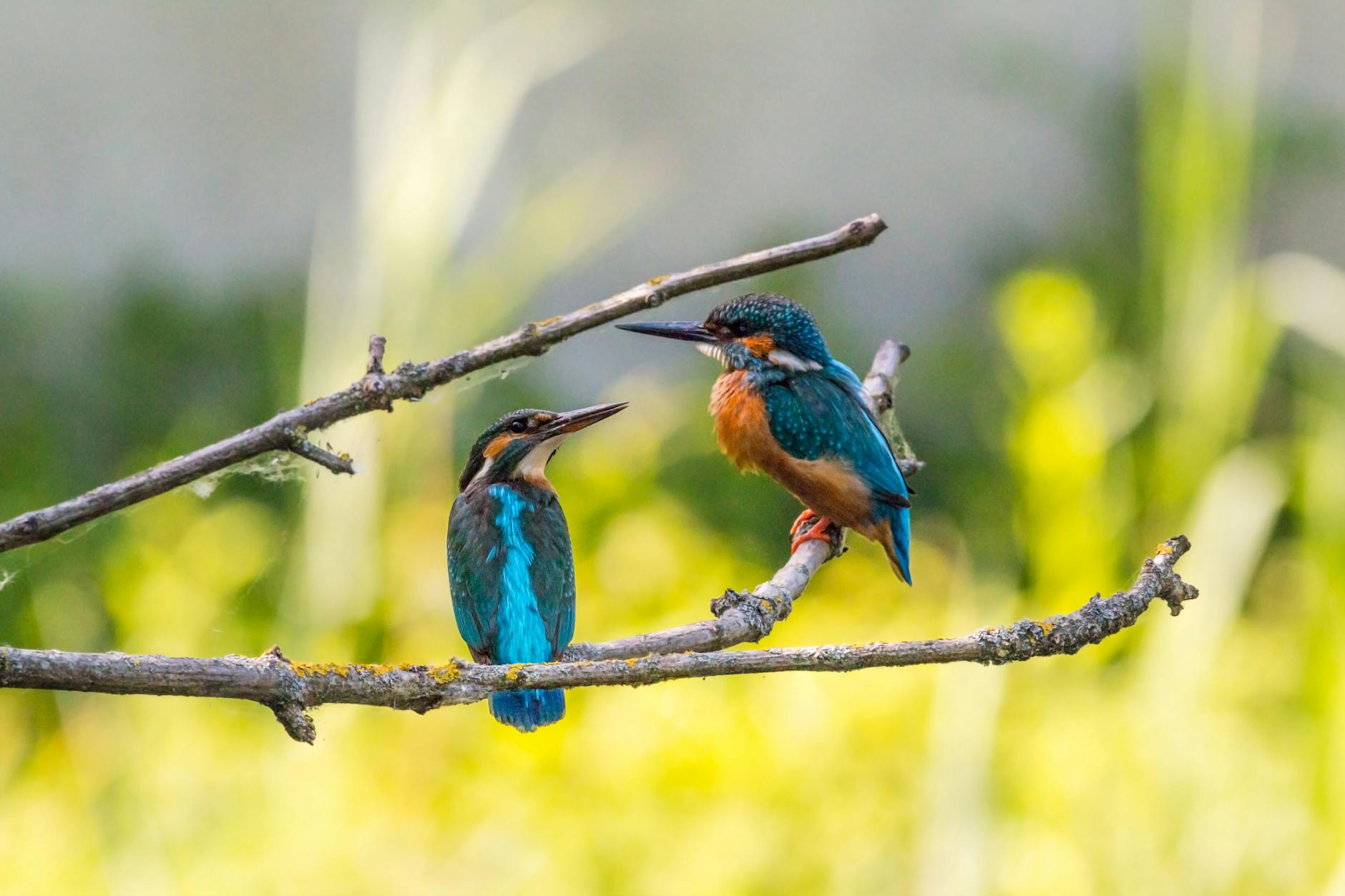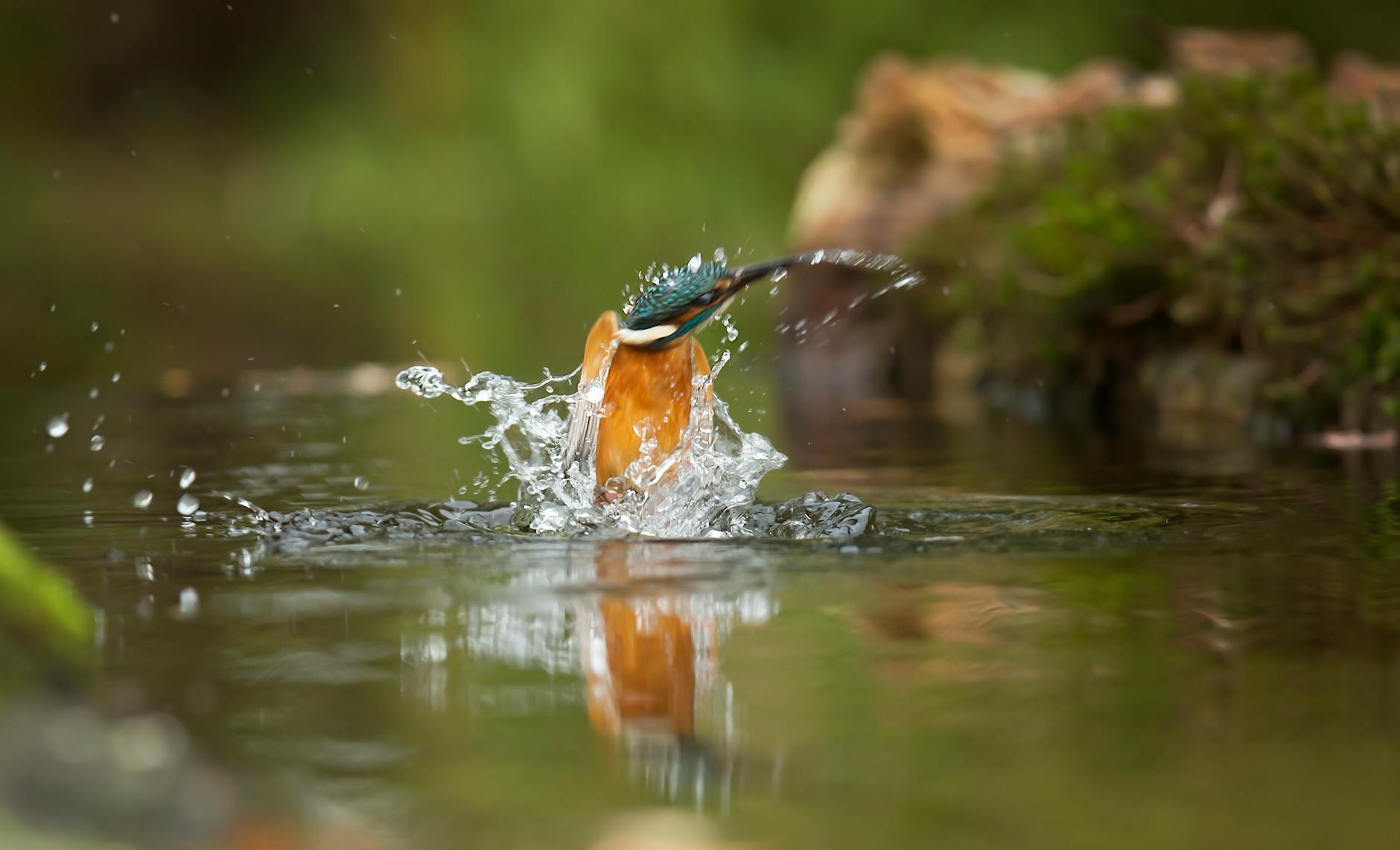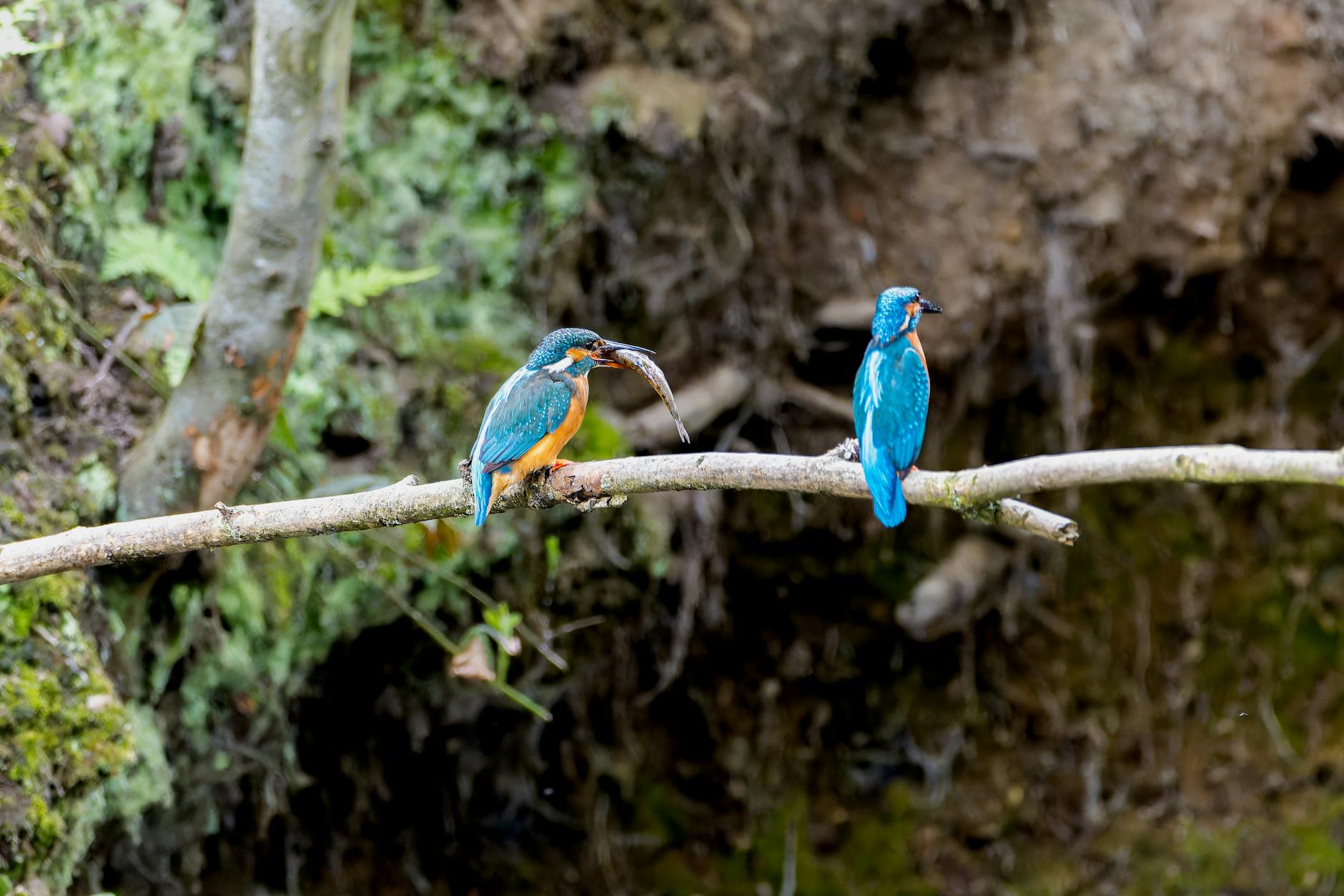Surprising Fun Facts About Kingfishers You Didn’t Know
Kingfishers are striking birds, known for their vibrant colours and remarkable behaviours. You might think you know a lot about these fascinating creatures, but there are surprising facts that many overlook.
In this post, we’ll reveal intriguing details about kingfishers, from their unique hunting techniques to their unexpected nesting habits. Get ready to learn why these birds are not just beautiful, but also vital indicators of a healthy ecosystem. Whether you’re a bird enthusiast or just curious, you’re in for some eye-opening insights that will deepen your appreciation for these colourful avians.
Physical Characteristics of Kingfishers
When exploring the fascinating world of kingfishers, their physical characteristics stand out as a defining feature. From their stunning feather colours to their distinctive shapes, these birds are marvels of nature. Let’s take a closer look at what makes kingfishers so unique.
Feather Colours and Patterns
Kingfishers are renowned for their vibrant feathers, an essential aspect of their charm. These birds boast a stunning palette that includes bright shades of blue, green, and orange. The shimmering blue and green hues come from structural coloration, where the microscopic structure of the feathers causes light to reflect in breathtaking ways. This optical phenomenon is crucial for their visibility in their natural habitat.
The contrasting orange colours on their bellies create a striking visual effect. Each feather type contributes to their overall appearance; for instance, the lighter orange feathers on their breast catch the eye, while the deeper blue of their back provides an elegant backdrop. This vivid coloration serves not just aesthetic purposes but also plays a role in communication and mating displays. For a deeper dive into kingfisher feather colours, check out this resource: Why does the kingfisher have blue feathers?.

Photo by Pixabay
Size and Shape
Kingfishers vary in size, ranging from the tiny dwarf kingfisher, which measures about 10 cm, to larger species that can grow up to 46 cm long. Most kingfishers have a stocky body with a large head and short neck. Their short legs are not made for perching but are highly effective for their aquatic lifestyle.
The shape of a kingfisher is easily recognisable: they have long, straight bills, which are perfectly designed for catching fish. This adaptation is one of the key features that allows them to hunt efficiently. The overall form of these birds, including their stubby tails, helps them navigate through dense foliage while they hunt. For more comprehensive details on kingfisher size specifications, take a look at this detailed account: Belted Kingfisher Identification.
Whether you admire their vibrant colours or their unique size and shape, kingfishers truly are a remarkable example of avian beauty.
Behavioural Traits
Understanding the behavioural traits of kingfishers reveals much about their hunting techniques, nesting habits, and communication styles. These fascinating behaviours are pivotal to their survival and provide a glimpse into their daily lives.
Diving Techniques
Kingfishers are remarkable divers, using precision and skill to catch fish. When spotting their prey, they dive head-first into the water, often from a height. This technique helps them achieve the necessary speed and angle to capture fish efficiently. The use of a transparent third eyelid offers protection for their eyes during the plunge, allowing them to see clearly as they enter the water. This unique adaptation reduces the risk of injury and helps them maintain focus on their target.
Their diving abilities are not just instinctual; they also rely on their keen eyesight to judge distances accurately. You can explore more about how they dive without injury here: How Kingfishers Dive Head-First.

Photo by Monique Laats
Nesting Habits
Nesting habits of kingfishers are truly unique among birds. Rather than building traditional nests, they dig burrows in the soft earth near water bodies. These tunnels can reach up to 15 feet long and contain a specially designed chamber for laying eggs.
The nest is generally lined with fish bones and other debris, which helps keep it clean and hygienic. Kingfishers prefer nesting in quiet locations, safe from predators and disturbances. This behaviour allows them to protect their young effectively. If you wish to learn more about their nesting process, check this resource: How Does a Kingfisher Build Its Nest?.
Communication and Calls
Kingfishers are not just colourful creatures; they also have distinct ways of communicating. They produce a variety of calls, from sharp rattles to loud screams. These sounds can indicate alarm or territory disputes. Males and females often engage in vocal displays to establish dominance or attract mates.
Their calls serve multiple purposes, helping them convey messages to one another in dense foliage or during flight. For a deeper look into the sounds of these birds, you can listen to their calls here: Belted Kingfisher Sounds.
Understanding these behaviours enriches our appreciation for kingfishers, showcasing not just their beauty, but also their adaptability and intelligence in the wild.
Diet and Hunting Methods
Kingfishers are not just colourful; their eating habits and hunting techniques are equally captivating. These remarkable birds have developed unique ways to secure their meals, showcasing their adaptability and skill.
Fishing Techniques
When it comes to catching prey, kingfishers exhibit incredible speed and precision. Their hunting starts with a keen observation from a perch near water. With sharp eyesight, they scan the surface for movements, allowing them to detect fish or other aquatic creatures. Once they have spotted their target, they dive swiftly, often from a height. This dramatic plunge is not just for show; it allows them to generate momentum and strike with accuracy.
Most kingfishers dive head-first, using their long, pointed bills to snatch fish directly from the water. Interestingly, they often do not submerge fully but instead grab their prey on the surface. They may even hover above the water before making their move, providing them with extra precision. After catching their meal, they may stun or kill it by slamming it against a hard surface, ensuring it is safe to eat. You can learn more about their effective fishing techniques here: Belted Kingfisher Fishing Techniques.

Photo by Siegfried Poepperl
Diet Diversity
Kingfishers are carnivorous, primarily feeding on a range of aquatic animals. Their diet is surprisingly diverse and includes:
- Fish: This is their primary food source, with favourites being minnows and sticklebacks.
- Aquatic insects: Kingfishers often snack on insects like dragonflies and mayflies, which they catch on the wing.
- Crustaceans: They don’t shy away from small crustaceans such as prawns and crabs.
- Amphibians: Occasionally, they consume frogs or tadpoles.
This varied diet allows them to thrive in different habitats and ensures they have access to food throughout the year. You can read more about kingfishers’ eating habits here: What Do Kingfishers Eat? (Diet + Behavior).
Kingfishers’ adaptability in hunting and diverse diet make them a fascinating subject for birdwatchers and nature lovers alike.
Cultural Significance of Kingfishers
Kingfishers hold a special place not just in nature but also in various cultures around the world. Their striking appearance and unique behaviours make them symbols in art, folklore, and as indicators of ecological health. Here’s a closer look at their cultural significance and how they reflect the state of ecosystems.
Symbolism in Art and Literature
Kingfishers are prominent figures in art and literature across many cultures. In folklore, these birds often embody themes of transformation and peace. For instance, in certain Native American tribes, the kingfisher represents prosperity and fertility. This symbolism can be traced back to its association with water and abundance, highlighting the connection between nature and human life.
Artists and poets have long drawn inspiration from kingfishers. For example, Gerard Manley Hopkins famously referenced the bird in his poetry to illustrate complex emotions and the interplay of opposites, such as calm and disturbance. Shakespeare also included kingfishers in his works, including King Lear and 1 Henry VI, using them to evoke particular imagery and themes. You can explore more about kingfishers in literature in this insightful piece: Birds of Shakespeare: The kingfisher.
Moreover, contemporary interpretations often depict kingfishers as symbols of luck and prosperity, further reinforcing their importance in cultural narratives. Artists like Missy Dunaway have explored their significance in various creative works, revealing how these birds bridge the natural world and human experiences. For more about the symbolism of kingfishers, check out this article: Kingfisher Symbol for Hopkins and Later Poets.
Ecosystem Indicators
Kingfishers serve as important indicators of ecosystem health. Their presence in a habitat often signifies a balanced, thriving environment. Being dependent on clean water and healthy fish populations, these birds reveal much about the state of the ecosystems they inhabit.
When kingfisher populations decline, it often signals underlying issues within their environment. This could include pollution, habitat degradation, or a decrease in fish availability. Conversely, a healthy population of kingfishers usually indicates good water quality and a robust aquatic ecosystem. Several studies have demonstrated that these birds are sensitive to environmental changes, making them valuable to ecologists for monitoring ecosystem health. For further insights on their role as indicators, refer to this resource: Kingfishers as Indicator Species in Aquatic Ecosystems.
In conclusion, the cultural significance and ecological role of kingfishers highlight their dual importance. They enrich our literary traditions while also reminding us of the health of our natural surroundings.
Surprising Facts About Kingfishers
Kingfishers are not only colourful and captivating but are also full of fascinating traits that might surprise you. Let’s explore two specific aspects of their lives: their incredible speed and agility, alongside their surprising longevity and lifespan in the wild.
Speed and Agility
Kingfishers are incredibly swift creatures, capable of flying at speeds up to 25 miles per hour. This speed is crucial for their hunting techniques, allowing them to swoop down on unsuspecting fish with impressive accuracy. Imagine a sleek missile plunging through water—that’s how kingfishers operate when they dive to catch their prey.
Their streamlined bodies and sharp beaks make these birds exceptional at navigating through both air and water. This seamless agility allows them to make quick turns and sudden drops, capturing fish in a matter of seconds. Whether perched on a branch or skimming above the water’s surface, their ability to blend speed with precision is a sight to behold. For some insights into their record speeds, check out this article: IS Kingfisher The FASTEST Bird On The Planet?.

Photo by FUTURE KIIID
Longevity and Lifespan
In the wild, kingfishers typically live for about 7 to 15 years, depending on the species and environmental conditions. Factors like availability of food, habitat safety, and predation can all influence their lifespan. Interestingly, some kingfishers have been recorded living up to 21 years in controlled environments such as wildlife sanctuaries.
The Woodland Kingfisher, among others, showcases remarkable longevity, reaching nearly 10 years in the wild. Their impressive lifespans highlight their resilience and adaptability in various habitats. To learn more about their longevity, you can explore this resource: Longevities of kingfishers.
By appreciating these aspects of kingfishers, we gain a deeper understanding of what makes them truly remarkable. With their incredible speed and overall lifespan, kingfishers certainly hold their own in the bird world!
Conclusion
Kingfishers captivate with their vibrant colours and remarkable behaviours. They are not just beautiful but also important indicators of a healthy ecosystem. Their unique hunting techniques, impressive speeds, and adaptable nesting habits highlight their place in the natural world.
As you explore the beauty of kingfishers, consider their role in our environment. What other remarkable traits might they have yet to reveal? Let’s continue to appreciate these stunning birds and advocate for the health of their habitats. Share your thoughts or any fascinating facts you know about kingfishers in the comments!










